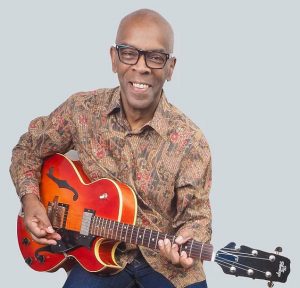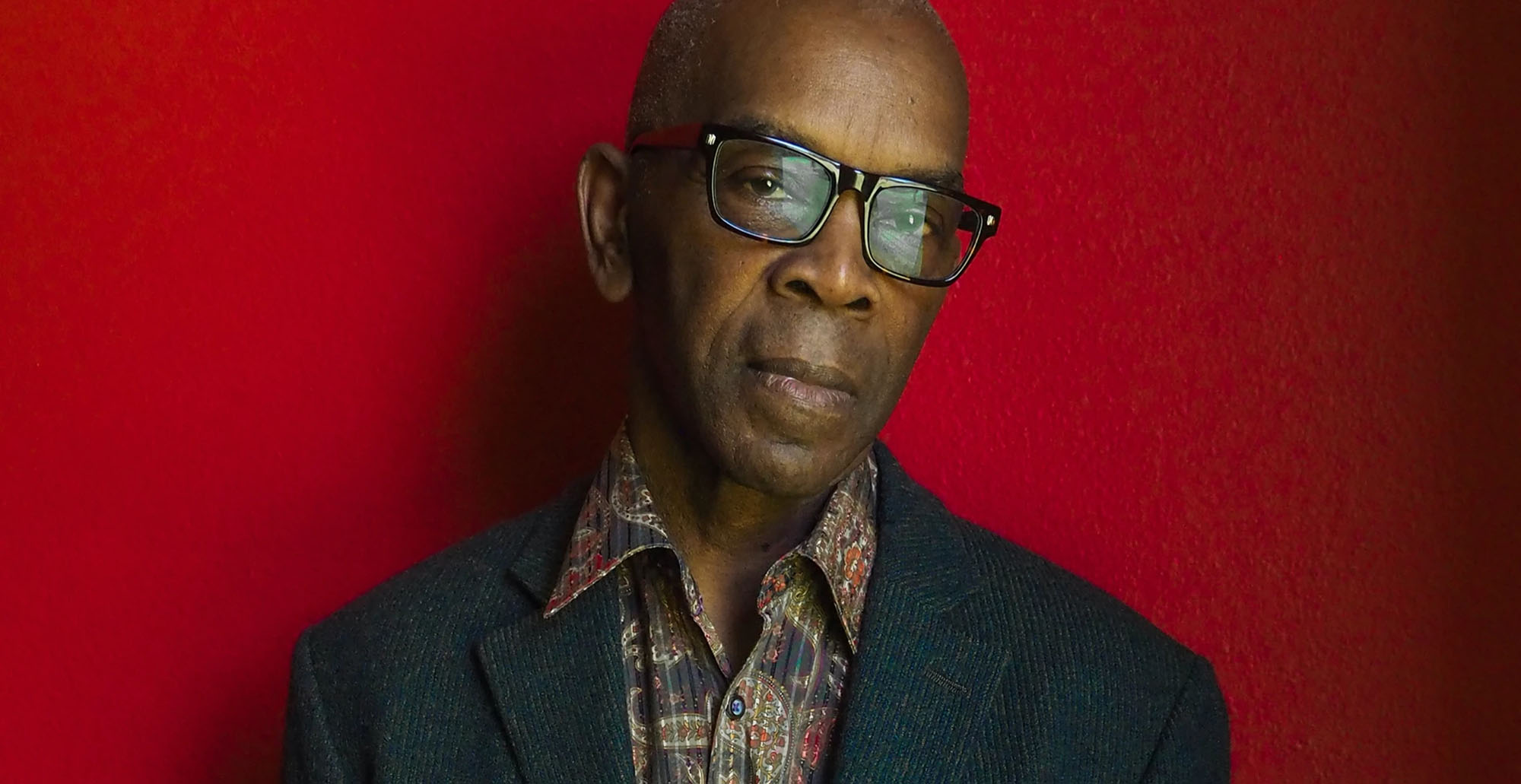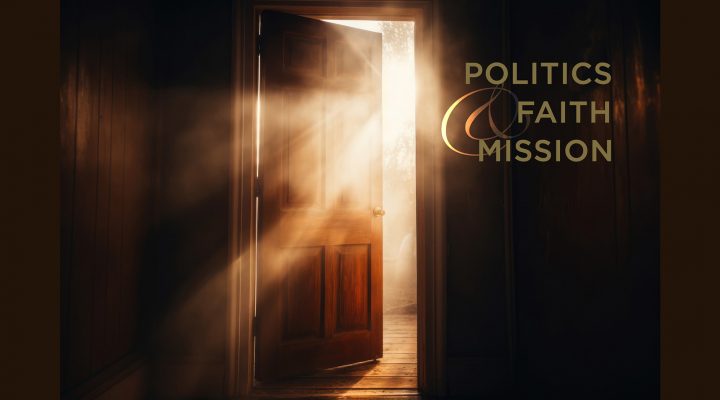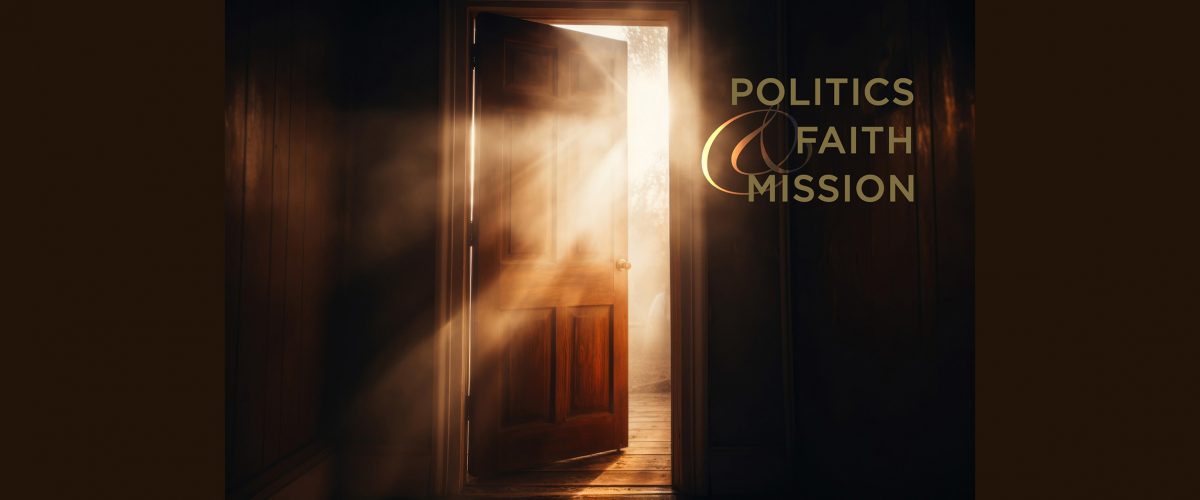Jimi Calhoun is full of stories about musicians with whom he’s performed, churches he’s served, and the human possibilities for which he hopes. As a bass player, he’s played across the globe with Dr. John, Parliament Funkadelic, Buddy Miles and Rare Earth, as well as playing his own music. As a writer and theologian, he’s looking at how we bridge boundaries, one of the most important tasks facing us in 2024 America. I’m so grateful to my friend for his engagement with these questions and for his invitation to dance.
Greg Garrett: Jimi, Border Dance, your latest book from Cascade, imagines dance as a way of bridging divides and building community. I never thought about the idea of dance as a way of understanding this — admittedly, I never played bass for Parliament Funkadelic — but now I can’t stop admiring it. Could you talk about the theology and the learning that underlies this latest book?

Jimi Calhoun
Jimi Calhoun: Allow me to start by turning to an unlikely source to support one of my theological positions, George Clinton, the leader of my former band Funkadelic. Surprisingly, some of the lyrics to one Funkadelic song actually mirror the words of Jesus (sans mild vulgarity). They went like this: “Open up your funky mind and you can fly. Free your mind and your ass will follow. The kingdom of heaven is within.”
While most Christians believe the kingdom of heaven is within, only a small percentage believe dance liberates in ways that allow the love implanted in them by the Spirit to be visible on the outside. To counteract this misunderstanding, the overarching premise of my book is that dancing is intrinsically liberating and transformative. Saint Augustine brings clarity to what I am saying in one of his poems:
I praise the dance, for it frees people from the heaviness of matter and binds the isolated to community. I praise the dance, which demands everything: health, a clear spirit, and a buoyant soul. Dance is a transformation of space, of time, of people, who are in constant danger of becoming all brain, will, or feeling. Dancing demands a whole person, one who is firmly anchored in the center of his life.
I argue that dance is both a metaphor and a spiritual practice and while it does involve the body, it is emotionally and cognitively stimulating. In the book, I mention that when Africans dance, they become in step with the rhythms of the universe. I suggest that when one loses themselves in dance there is no fear, past or future, just the now.
“When one loses themselves in dance there is no fear, past or future, just the now.”
To execute intricate dance movements of this type requires determination, passion, flexibility and agility. Throughout Border Dance, I maintain that these same elements are necessary to dance across the boundaries that separate us, particularly those based on race. Moreover, for me border dancing is more than a concept or an ideal; it is a human activity that culminates in a type of unity that is both visible and meaningful.
GG: One of the things I admire most about Border Dance is how you interweave your own personal history into the cultural and theological reflection you’re doing. When preachers and memoirists tell their stories, it’s supposed to be in service to others, and this most definitely is. Could you talk with us a little bit about where you’ve seen reconciliation from the stage?
JC: As I state in the book, “Language is the dress of thought; every time you talk, your mind is on parade.” As a funk musician, I’ve discovered this principle also applies to dance. Every time you dance, your cultural heritage is on display. One important barrier to reconciliation is the hesitation on the part of many in the majority culture to enter the worlds of “the other” and acknowledge their true value. This is how I illustrated this tendency:
When the Europeans first encountered the world’s darker-skinned people they reacted quickly, but not positively, to their “strange” (to them) customs. They did not understand the cultures and did not know what they saw. Consequently, they called the festivals and rites of passage enjoyed by these darker-skinned people primitive or savage. The Europeans targeted dance because they couldn’t appreciate the creativity of the African people.
However, what I’ve witnessed on stage is that when people dance in large groups, the exact opposite occurs. People caught up in the excitement of the moment seem to care very little about difference. As barriers are trampled underfoot, economic and social disparities are shattered, increasing the probability of reconciliation.
Throughout my music career I’ve watched people from every imaginable walk of life blending in with each other to create an atmosphere where everyone was certain they belonged. That was a constant. Is it possible to say the same about a large number of suburbs, neighborhoods or even churches in many American cities?
“The greatest hindrance to achieving true reconciliation is that different races are not in close proximity to one another where it matters, where people live and play.”
I wrote Border Dance because I believe the greatest hindrance to achieving true reconciliation is that different races are not in close proximity to one another where it matters, where people live and play. If the adage “better together” has any meaning, what happens when people are separated by race or other differences? Dancing by definition requires participants to be near their partner. However, we know economics and personal preference allow many people to avoid interacting with someone they perceive to be unlike them. I am hoping that people who read my book will join in the partner dance called life. After all, we really are in this together.
GG: You’re currently senior pastor at Bridging Austin, but you’ve had a number of ministry jobs over the years. Could you tell us what you’ve learned from them and what you bring to your current place, which so beautifully describes itself as “a reconciling community of friends living out faith in a multi-cultural context”?
JC: I was ordained in 1992 and during my time in ministry I have been a full-time missionary, lead pastor, adult ministry pastor, small groups pastor and music minister. I have worked in churches that understood themselves to be a hospital for the wounded, a place for seekers to investigate faith or question their faith, a Bible school and a place where people could find God.
I believe every stop on my journey contributed to why I ended up starting Bridging Austin. In 2016, I decided to establish a church that would serve as a bridge for people who, for whatever reason, were living separately. Let me use metaphor once again to illustrate what that means.
“The functioning part of a bridge is actually the surface that allows people to cross from one side to the other.”
Typically, when people think of a bridge, they envision a gorgeous structure such as the Golden Gate Bridge in San Francisco, my hometown. You might be surprised to learn that a bridge is more than just the supporting framework that holds the structure in place. The functioning part of a bridge is actually the surface that allows people to cross from one side to the other. I have run marathons across, and driven across, the Golden Gate Bridge many times and I always took what was beneath my feet or tires for granted.
That is true of peacemakers too. Seldom do people realize that playing the role of peacemaker requires purposefully putting themselves at the bottom in order to serve others. That is also what is required of those who desire to be involved in a reconciling community. We exist for the “good of the other.”
That is often referred to as positive peacemaking because it is not activated by a negative, such as addressing a wrong that needs righting. Whether “the other” is a person marginalized because of race, disability or socio-economic status, Bridging Austin is the place where their well-being comes first.

Jimi Calhoun
GG: Could you tell us about your connection to the Iona Community and what it offers?
JC: Membership in the Iona Community enables me to incorporate both orthodox spirituality and orthopraxy, which means actionable faith, into my spiritual practices. One phrase we say as part of Iona’s daily office reads, “in work and worship, God is with us.” That helps me remember I am never “off the clock” with God.
Additionally, my membership serves as a reminder that God’s love is a global and universal phenomenon. Regrettably, I see an increasing number of Christians who believe developing a close, personal relationship with God means becoming isolated and detached from the world around them. My hope is that soon more Christian leaders recognize that Western individualism is incompatible with Martin Luther King’s vision of a Beloved Community. Individuals in that community strive for something more in life than the self-focused, myopic goal of their own well-being.
GG: You were so kind to step into the Racism in the Church Conference at Baylor this year and be part of a conversation among Black pastors serving in white spaces. Could you share what you’ve learned being that Black leader in a church setting, and what you’d like for white congregations to know?
JC: Cognitive and behavioral scientists have long recognized that human beings seem to naturally fear strangers and outsiders. That means fearing the outsider is not unique or exclusive to Western racism. But the fact that the white and black divide is so pervasive in churches suggests that skin color does provide the first layer of “otherness.”
Why? Histories! This is why I use broad historical sweeps to buttress the points I want to make. For example, in Border Dance, I write, “In its minutes from 1885, a Western Christian mission board acknowledged what many people would rather forget or deny, colored people in our country were taken by the hand of violence.”
I also tell the story of a freed enslaved person named Thomas Johns. When interviewed in the 1930s, he said his father had been born in Africa before being stolen and brought to Savannah, Ga. He spoke about how dance was used in his kidnapping. His father had been asked to dance on a ship. The next morning, after realizing he was far from land, he knew he was no longer African.
“His father had been asked to dance on a ship. The next morning, after realizing he was far from land, he knew he was no longer African.”
Yes, the African American person you see walking the streets every day is probably there as an aftermath of forced migration. However, that is not the same story told about how and why people of European descent became Americans. Here is the problem. It can be difficult to engage in a constructive dialogue with a people group whose histories are 180 degrees out of phase from one another.
Oscar Wilde has said, “History is not the past but the stories we tell ourselves about the past.” As long as racialized histories permeate Sunday mornings, it will be a challenge to have the biblical message of love and grace produce the kind of solidarity between Christians who are, in my opinion, called to be examples in a world where uncertainty concerning faith is growing.
GG: I’m asking everyone I talk to where they’re finding grace and resurrection hope these days.
JC: Ironically, you are part of what is giving me hope right now. This is why. My music career spanned the major festival era sometimes called the Woodstock generation. There were not that many rock and roll bands that had record contracts back then, and so if you were on the circuit you would eventually cross paths with just about everybody. This is why I was able to meet recording artists with names like Jagger, Lennon, Dylan, Hendrix and Bowie. What is important here is that they were not just peers, they were allies.
Now Greg, this is where you come in. Nothing is more valuable than an ally when it comes to working for reconciliation. That is because this work can lead you down a very hard and lonely path. The leaders I met at your conference on racism at Baylor reminded me I am not alone. True, I always feel Jesus is with me, but I’m not always sure there are people out there who share my strong belief that the church ought to champion racial reconciliation.
 The second thing I would say may sound counterintuitive, possibly even paradoxical, but the current blurring of denominational borderlines excites me to no end. Like with race, I think some church leaders are coming to accept people who seem different while lessening their emphasis on what used to be sources of conflict. I am amstoryteller, so let me illustrate by using story.
The second thing I would say may sound counterintuitive, possibly even paradoxical, but the current blurring of denominational borderlines excites me to no end. Like with race, I think some church leaders are coming to accept people who seem different while lessening their emphasis on what used to be sources of conflict. I am amstoryteller, so let me illustrate by using story.
A few years ago, I was on a panel with pastors from a variety of denominations. The hosts requested that our name tags display our denominational affiliation in addition to any theological distinctions that came with it. On mine, I wrote International Church of the Foursquare Gospel as my denomination, and “Contemplative/Pentecostal” as my ecclesiological leanings. I was pleasantly surprised that rather than raising suspicion or some kind of criticism, the other pastors were curious about how two opposing viewpoints could coexist.
GG: What are you reading, watching or listening to that reminds you that God is hard at work, even in an election year?
JC: I read quite a bit and my tastes span a wide variety of genres. That said, I have three books open I am reading in support of my work.
One is Our Tribal Future: How to Channel our Foundational Human Instincts into a Force for Good, David R. Samson. This book shows us why we should not be quick to identify with a tribe based purely on characteristics such as skin color or affluence.
The second book, Love and Forgiveness for A More Just World, edited by Hent De Vries and Nils F. Schott, emphasizes the idea that justice has sociological implications in addition to being a forensic concept.
The third book, More Than Things: A Personalist Ethics for A Throwaway Culture, Paul Louis Metzger, has helped me see the importance of answering the question, “Who and what are you?” before addressing many of the other concerns we encounter.
Greg Garrett teaches creative writing, film, literature and theology classes at Baylor University. He is the author of two dozen books of fiction, nonfiction, memoir and translation, including the critically acclaimed novels Free Bird, Cycling, Shame and The Prodigal. His latest novel is Bastille Day. He is one of America’s leading voices on religion and culture. Two of his recent nonfiction books are In Conversation: Rowan Williams and Greg Garrett and A Long, Long Way: Hollywood’s Unfinished Journey from Racism to Reconciliation. He is a seminary-trained lay preacher in the Episcopal Church. He lives in Austin with his wife, Jeanie, and their two daughters.
More from this series:
Politics, faith and mission: A conversation with David Dark
Politics, faith and mission: A conversation with Randolph Hollerith
Politics, faith and mission: A conversation with Jillian Mason Shannon
Politics, faith and mission: A conversation with Bishop Mariann Edgar Budde
Politics, faith and mission: A conversation with Vann Newkirk II
Politics, faith and mission: A conversation with Sarah McCammon
Politics, faith and mission: A conversation with Winnie Varghese
Politics, faith and mission: A conversation with Kaitlyn Schiess
Politics, faith and mission: A conversation with Russell Moore
Politics, faith and mission: A BNG interview series on the 2024 election and the Church
Politics, faith and mission: A talk with Tim Alberta on his book and faith journey
Politics, faith and mission: A conversation with Jemar Tisby
Politics, faith and mission: A conversation with Leonard Hamlin Sr.
Politics, faith and mission: A conversation with Ty Seidule
Politics, faith and mission: A conversation with Jessica Wai-Fong Wong


